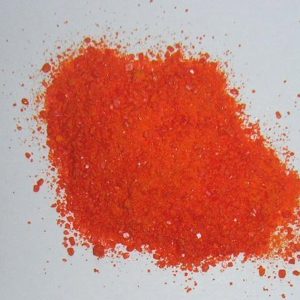Description
Sodium carbonate (also known as washing soda or soda ash), Na2CO3, is a sodium salt of carbonic acid. It most commonly occurs as a crystalline heptahydrate which readily effloresces to form a white powder, the monohydrate. It has a cooling alkaline taste and can be extracted from the ashes of many plants. It is synthetically produced in large quantities from table salt in a process known as the Solvay process.
Uses
Sodium carbonate’s most important use is in the chemical make-up of glass. When heated at very high temperatures, combined with sand (SiO2) and calcium carbonate (CaCO3), and cooled very rapidly, sodium carbonate can be used to form a transparent non-crystalline material, commonly known as glass.
In chemistry, sodium carbonate is often used as an electrolyte. This is because electrolytes are usually salt-based, and sodium carbonate acts as a very good conductor in the process of electrolysis.
Domestically it is used as a water softener during laundry. It competes with the ions magnesium and calcium in hard water and prevents them from bonding with the detergent being used. Without using washing soda, additional detergent is needed to soak up the magnesium and calcium ions. Called Washing Soda or Sal Soda in the detergent section of stores, it effectively removes oil, grease, and alcohol stains. Sodium Carbonate is also used as a descaling agent in boilers such as found in coffee pots, espresso machines, etc.
Sodium carbonate is widely used in photographic processes as a pH regulator to maintain stable alkaline conditions necessary for the action of the majority of developing agents.
Sodium carbonate is also used by the brick industry as a wetting agent to reduce the amount of water needed to extrude the clay.
Soda Ash is also a common additive in municipal pools used to neutralize the acidic effects of chlorine and raise pH.
In casting, sodium carbonate monohydrate is referred to as a “bonding agent” and is used to allow wet alginate to adhere to gelled alginate.
Sodium carbonate is often used as a primary standard for acid-base titrations because it is solid and air-stable, making it easy to weigh accurately.
Occurrence
Sodium carbonate is soluble in water but can occur naturally in arid regions, especially in the mineral deposits (evaporites) formed when seasonal lakes evaporate. Deposits of the mineral natron, a combination of sodium carbonate and sodium bicarbonate, have been mined from dry lake bottoms in Egypt since ancient times when natron was used in the preparation of mummies and in the early manufacture of glass. Sodium carbonate has three known forms of hydrates: sodium carbonate decahydrate, sodium carbonate heptahydrate, and sodium carbonate monohydrate.








Reviews
There are no reviews yet.